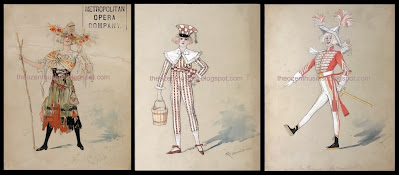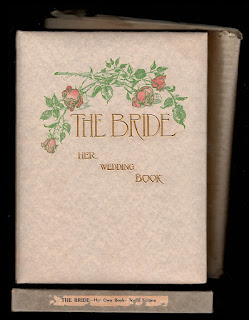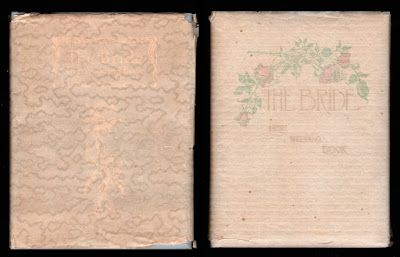In collecting, it’s always fun to run across items you haven’t seen before. Today I’m posting a couple unfamiliar bits & pieces relating to W.W. Denslow, the original illustrator of The Wonderful Wizard of Oz.
First we have a booklet illustrated for Berry Brothers Varnish, called Around the World in a Berry Wagon and published in 1909. Denslow illustrated quite a few advertising booklets for various companies, and I’ve seen a number of examples of this one in the past. The interesting thing here is that this particular example still has its decorative mailing envelope!
The characters are taken from various illustrations within the booklet, and the wraparound design is both fun and attractive. I love the rubber stamps on front and back of the envelope requesting careful handling as it’s a booklet meant for a child! This copy was sent in 1910 to Louise Morgense in Tygh Valley, Oregon, and arrived at its destination unscathed.
The interior illustrations are colorful and energetic, showing children from around the world playing with different vehicles made from a Berry Brothers wooden crate. The pages facing the illustrations offer information about the various countries shown in the drawings.
Next, I have a piece of sheet music with a cover drawn by Denslow. The title is I Want To Be There, by Grant Clark and Jimmy Monaco, published in 1915. I was aware Denslow designed some music sheets, but I haven’t run across this particular title before; it’s unsigned, but there are too many indicators for it to be anyone else’s work.Both the farmer and his dog are clearly Denslow types, and the various details of landscape, house and floral elements are easily identifiable. An additional fun point is the inset photo of Bessie Wynn; Bessie originated the role of Dashemoff Daily in the first stage version of The Wizard of Oz, starting in Chicago in 1902 then on Broadway in 1903. Denslow died in 1915, so this would have been a late piece of work.
My final piece is a silver plated cup which may have been produced without Denslow’s knowledge, but was clearly influenced by his illustrations for Denslow’s Mother Goose. Denslow’s inspiration for illustrating the classic rhyme Jack be Nimble was to illustrate a small dog jumping over a candlestick. This same image is embossed on the cup, produced by the American Silver Plate Co. of Connecticut.The similarity can easily be seen when compared to the book illustration. This piece fits nicely with the pair of decorative plates made by Haynes Pottery and credited to Denslow, featuring two other images from Denslow's Mother Goose.


























































